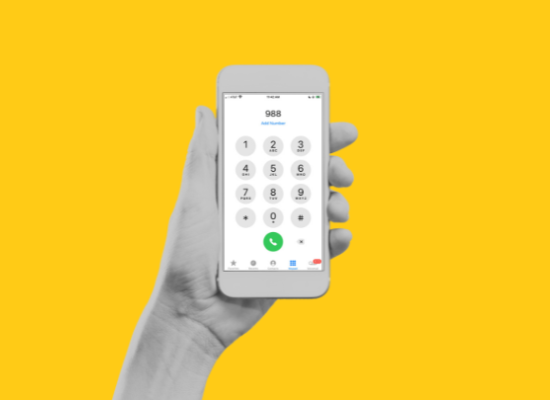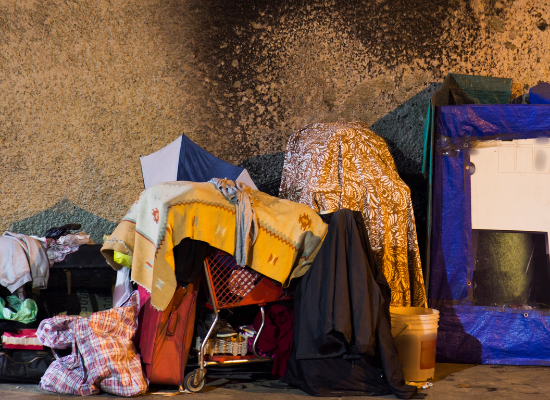
Stephanie Hepburn is a writer in New Orleans. She is the editor in chief of #CrisisTalk. You can reach her at .
Psychiatrist Rochelle Head-Dunham, M.D., executive and medical director for the Metropolitan Human Services District in New Orleans, says we’ve reached a point in American history where the collision of a viral pandemic and systemic racism has unveiled unequivocal racial disparities. Unlike COVID-19, racism, and how it infects all systems, is far from novel, she says, but Americans are finally acknowledging racial inequality in a way that translates to anti-racism.
“It’s not enough to not be racist; that’s a stagnant state that doesn’t produce change,” says Dr. Head-Dunham. “Contrarily, being declaratively antiracist propels action.” The latter focuses on accountability and a conscious effort to dismantle racism.
Early on, the pandemic revealed that COVID-19 disproportionately affects communities of color. Newer information has solidified the finding, with Black, Latino, and American Indian people getting sick and dying at higher rates than their White peers.
Deaths and cases among these marginalized populations surpass the percentage they make up of the United States population. According to The COVID Tracking Project dashboard at The Atlantic—updated twice a week—Black and Latino people each make up 21% of COVID-19 deaths even though they’re 12.3% and 17.8% of the population, respectively. They’re dying at 2.3 and 1.5 times the rate of their White counterparts.
While the crisis has brought into stark relief the racial disparities in COVID-19 cases and deaths, Dr. Head-Dunham is careful to note they just don’t exist in a medical healthcare silo. They are “in every system and aspect of life,” whether political, economic, educational, or in mental healthcare. “At the core of racial disparity is racism and power differentials where one group exercises authority over another, handicapping the one that’s disenfranchised.”
A retrospective study published in August examined 11,210 people hospitalized with COVID-19 and found that Black patients, compared to White patients, were younger and more likely to be women and have Medicaid and coexisting conditions like asthma, cancer, and congestive heart failure. Black patients were also more apt to have greater neighborhood deprivation—an index that looks at poverty, education, employment, housing, and poverty.
Yet when the researchers adjusted for age, comorbidity, treatment hospital, insurance status, sex, and neighborhood deprivation, they found no difference in all-case, in-hospital mortality between Black and White patients.
“It’s policy that’s both the problem and solution,” says Dr. Head-Dunham. “Vulnerabilities to the virus aren’t inherent to a person’s race but because of the disadvantages U.S. systems have created.”
Racism, says Dr. Head-Dunham, has been pervasive and consistent across all systems from the very start of what would become the United States, “with slavery as the building block.” At its core, she notes, is the perpetual underlying belief in American society that Black people are subhuman, which has affected the nation’s infrastructure, including enacted laws and policies.
Dr. Head-Dunham points out that she’s had to navigate a world of racism and prejudice her entire life, and doing so would chip away at any person’s trust in the very systems they’re supposed to be able to turn to. Furthermore, she says that being Black in America affects all aspects of a person’s wellbeing, including physiological and psychological. Together, marginalization and lack of trust in healthcare systems is a recipe for health challenges.
When a patient herself in the healthcare system, Dr. Head-Dunham says she has to weigh whether or not to mention that she’s a physician. It turns out, neither option is ideal. First, she waits to see how the doctor interacts with her. “If they aren’t listening, I let them know I’m a physician, and their demeanor changes.” Yet, sharing her credentials can backfire. “For those of us blessed to be well educated, we also have to balance the insecurity and threat White people may feel about it.”
Tina Sacks, author of Invisible Visits: Black Middle-Class Women in the American Healthcare System, told Berkeley News in 2019 that studies on healthcare inequalities typically examine race and poverty. “…there’s not a lot about educated, insured Black women who are not poor,” said Sacks. “Yet infant mortality rates for Black women with a college degree are higher than those for White women with just a high school education.” What she discovered was story after story of stereotyping and racial bias.
There’s a reason Black women are anxious about going to the doctor’s office, says Dr. Head-Dunham, and it’s that clinicians rarely accept that a Black woman knows her body better than they do. “It’s a simple premise. But not being believed or taken seriously is dismissive and part of the problem, and it affects outcomes.”
Knowledge isn’t inert, and healthcare providers are consistently stretching themselves and learning new innovations to better treat their patients. Yet, because of racial biases, Dr. Head-Dunham says the system stretches more for White people than Black people, and a lack of cultural competency among non-Black providers contributes to misdiagnosis. For example, compared to White people with the same symptoms, mental health providers are more apt to diagnose Black people with schizophrenia and less often with mood disorders.
“As a psychiatrist, I’m only as good as my desire to stay on top of what’s groundbreaking. We do it all the time: when the patient is in front of us, and to prepare for the next person walking in the door who may be a diagnostic dilemma. It takes us caring enough to push ourselves. And none of it will happen if you don’t believe the person.”
While Black women are frequently not believed, Black men are often perceived to be larger and more threatening than their White counterparts. As was the case with Elijah McClain, who was on his way home when three officers approached him. As they pinned him to the ground, one officer can be heard on a body camera saying McClain had “incredible strength.” Another agreed. At 5 feet 6 inches and 140 pounds, McClain was not a large person. When Aurora Fire Rescue personnel arrived on the scene, they estimated he was 220 lbs, nearly 64% heavier than his actual weight, and based on that misperception, paramedic Jeremy Cooper administered 500 milligrams of ketamine. McClain went into cardiac arrest on the way to the hospital and died six days later.
When under pressure, notes Dr. Head-Dunham, many people lapse into stereotyping, and physicians and law enforcement who must quickly assess a critical situation such as a medical or psychiatric health crisis are not exempt. (To be clear, McClain was not in crisis when officers approached him. He’d committed no crime and was simply walking home.) She notes that people need to recognize their explicit and implicit biases but not use the latter as an excuse instead of a turning point for change. “Those of us trying to move the dial have to be cautious about how much to play into implicit bias because people are using it to sweep their behavior under the rug.”
The conversation around unconscious bias, says Dr. Head-Dunham, should include acknowledging biases and a plan of action. “What are you going to do about it?” she asks. Furthermore, the acts that have caused racism to bubble to the forefront are not those that are unconscious.
Dr. Head-Dunham says racism in America has been like a kettle percolating, just waiting for the right amount of heat to blow the top off. The pandemic’s timing, racial disparities in COVID-19 cases and deaths, the political climate, and the murder of George Floyd by four Minneapolis police officers on May 25 have been that heat. She says it has galvanized people of all races and ethnicities, but it’s also taken a mental health toll on Black Americans. “It’s so palpable that it’s hard for us not to lose it emotionally. I have to figure out the words to even engage in this conversation.”
According to the Census Bureau and CDC’s Household Pulse Survey, in the week after the video of Floyd’s death became public, Black Americans who screened positive on the survey for anxiety and/or depression spiked from 36 percent to 41 percent. While the increase is a response to the current climate, Dr. Head-Dunham says the mental health crisis for Black Americans isn’t new. In fact, Black boys, ages 5-12, are roughly twice as likely to die by suicide than their White peers, and the number of Black adolescents who self-reported suicide attempts rose by 73% between 1991 and 2017.
One way to narrow health disparities in psychiatric and physical healthcare is through what Ryan B. Huerto, M.D., M.P.H., M.A., calls patient-provider racial and ethnic concordance. In fact, a study by Marcella Alsan, Owen Garrick, and Grant Graziani found that Black men randomly assigned to a Black doctor were more likely to sign up for more preventative services and share other health challenges than with a non-Black doctor. Also, the Black doctors were more apt to write additional notes about the men than non-Black doctors. The researchers state that their findings suggest Black doctors could reduce cardiovascular mortality by 16 deaths per 100,000. That’s a 19% reduction in the cardiovascular mortality gap between Black and White men.
Unfortunately, there is insufficient representation of minorities in all healthcare fields, causing Black healthcare providers to delay or come out of retirement or semiretirement. That includes 74-year-old psychiatrist William B. Lawson. “I’m just amazed when I turn on the television set,” Dr. Lawson told the Washington Post. “The images of police brutality are so disturbing, and the racial disparities in deaths from COVID-19 are very distressing.”
The collision of events has placed American society at the precipice of change, but Dr. Head-Dunham says it’s going to take leadership to push it over the edge—not through tokenism but actual representation—and that Black people can’t fix this on their own because “the power differential is not on our side.” “At the end of the day, Black people can’t change systems they didn’t have a voice in creating and remain on the periphery of.”
Change, says Dr. Head-Dunham, is going to take everyone. What’s frustrating, she notes, is that none of this is new. “Any Black person can tell you that.” But there’s been a tipping point where people not only understand that racism is wrong but will stand up against it. It’s the latter part that Dr. Head-Dunham hasn’t witnessed before. At least not to this degree. She hopes that this energized group is in it for the long haul, not just until the trend is over, because ongoing consistency is crucial. She tells non-Black people to do their own work. It’s personal, and a few group conversations won’t cut it.
“You’ve got to dig deep and understand what’s going on in your head,” says Dr. Head-Dunham. “Start with, ‘Why haven’t I said anything before?’”
Photo of Black Lives Matter Plaza in Washington, D.C., by Ted Eytan









